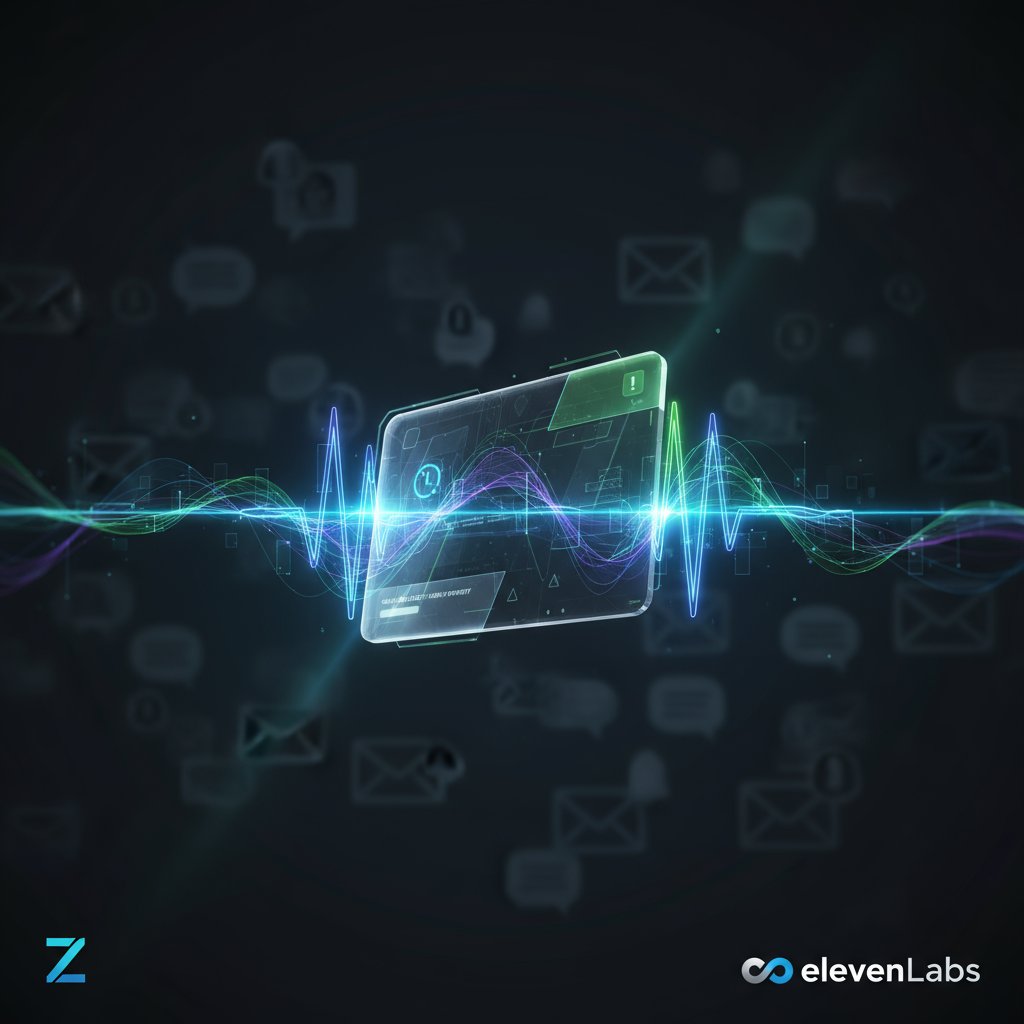Introduction
The landscape of software development has been evolving rapidly, with Continuous Integration and Continuous Deployment (CI/CD) becoming the backbone of modern software delivery. Yet, even the most refined CI/CD pipelines often contain manual processes that create bottlenecks, particularly in code reviews, testing, and deployment approvals. Enter artificial intelligence, and specifically large language models (LLMs) like Claude, which are revolutionizing these traditionally human-intensive tasks.
In this comprehensive guide, we’ll explore how AI assistants are transforming CI/CD workflows, making them more efficient, reliable, and truly continuous. We’ll dive into practical implementations, real-world case studies, and best practices for leveraging AI to automate everything from code reviews to deployment decisions.
The Evolution of CI/CD: From Manual to Intelligent
Traditional CI/CD Pipelines and Their Limitations
Traditional CI/CD pipelines have come a long way from the days of manual deployments. They automate building, testing, and deploying code, but still rely heavily on human intervention for critical decision-making processes:
- Code Reviews: Engineers manually reviewing pull requests, checking for bugs, style issues, and security vulnerabilities
- Test Creation: Developers writing unit and integration tests, often with inconsistent coverage
- Configuration Validation: Manual verification of infrastructure-as-code and application configurations
- Deployment Approvals: Human gatekeepers deciding when code is ready for production
These manual steps create bottlenecks that slow down delivery, introduce inconsistency, and drain valuable engineering resources.
The AI Advantage in CI/CD
AI assistants like Claude bring several unique capabilities to CI/CD processes:
- Natural Language Understanding: Comprehension of code, documentation, and requirements in context
- Pattern Recognition: Identification of bugs, anti-patterns, and optimization opportunities
- Learning Capability: Improvement over time by observing successful code and deployments
- 24/7 Availability: Continuous operation without fatigue or attention lapses
- Consistency: Application of the same level of scrutiny to every code change
AI-Powered Code Reviews: Beyond Static Analysis
How AI Enhances the Code Review Process
Traditional static analysis tools can catch syntax errors and known patterns, but they lack the contextual understanding that humans bring to code reviews. AI assistants like Claude bridge this gap:
# Example of AI code review feedback
# Original code with potential issues
def process_user_data(user_input):
result = json.loads(user_input)
query = "SELECT * FROM users WHERE id = " + result['id']
return database.execute(query)
# AI feedback
"""Review feedback:
n1. Security vulnerability: SQL injection risk in line 3. Consider using parameterized queries.
n2. Error handling: No try/except blocks for JSON parsing or database operations.
n3. Input validation: No validation of user_input structure before processing.
n4. Performance: Query selects all columns (*) when you might need only specific fields.
"""
AI code reviews can address multiple dimensions simultaneously:
- Functional correctness: Identifying logical errors and edge cases
- Security vulnerabilities: Detecting potential injection attacks, unsafe dependencies, and other security issues
- Code quality: Suggesting improvements for readability, maintainability, and performance
- Adherence to standards: Ensuring code follows team or industry best practices
- Documentation: Suggesting improvements to docstrings and comments
Implementing AI-Powered Code Reviews
Integrating AI into your code review process can be approached in several ways:
- GitHub Actions Integration: Trigger Claude to review pull requests automatically using GitHub’s webhook system
- Custom Review Bot: Build a bot that calls Claude’s API when new code is submitted for review
- IDE Extensions: Integrate AI feedback directly into developers’ coding environments
A typical implementation might look like this:
- Developer pushes code to a feature branch and creates a pull request
- CI/CD system triggers the AI assistant to analyze the changes
- AI generates a comprehensive review with actionable feedback
- Feedback is posted directly to the PR, categorized by severity
- Developer addresses the issues and pushes updates
- AI re-reviews the changes until all critical issues are resolved
Automated Test Generation and Optimization
From Manual Test Writing to AI-Generated Test Suites
Test creation is often a bottleneck in development, with engineers struggling to achieve comprehensive coverage. AI assistants can dramatically improve this process:
# Example function needing tests
def calculate_discount(price, customer_tier, purchase_history):
"""Calculate discount based on price, customer tier and purchase history.
Args:
price: Original price (float)
customer_tier: Customer level ('bronze', 'silver', 'gold', 'platinum')
purchase_history: List of previous purchase amounts
Returns:
Discounted price (float)
"""
base_discount = 0
# Tier-based discount
if customer_tier == 'bronze':
base_discount = 0.05
elif customer_tier == 'silver':
base_discount = 0.10
elif customer_tier == 'gold':
base_discount = 0.15
elif customer_tier == 'platinum':
base_discount = 0.20
# Loyalty bonus for customers with 5+ purchases
loyalty_bonus = 0.05 if len(purchase_history) >= 5 else 0
# Volume bonus for customers with high average purchase value
volume_bonus = 0
if purchase_history and sum(purchase_history) / len(purchase_history) > 1000:
volume_bonus = 0.05
total_discount = base_discount + loyalty_bonus + volume_bonus
return price * (1 - total_discount)
# AI-generated test cases
"""
import pytest
def test_bronze_tier_basic_discount():
price = 100.0
result = calculate_discount(price, 'bronze', [])
assert result == 95.0 # 5% discount
def test_platinum_with_loyalty_and_volume_bonus():
price = 200.0
history = [1200, 1500, 900, 1100, 1300]
result = calculate_discount(price, 'platinum', history)
# 20% base + 5% loyalty + 5% volume = 30% total discount
assert result == 140.0
def test_invalid_customer_tier():
price = 100.0
result = calculate_discount(price, 'diamond', [])
# Should default to 0% discount for invalid tier
assert result == 100.0
def test_edge_case_empty_price():
result = calculate_discount(0, 'gold', [500, 600])
assert result == 0
"""
AI can generate tests that cover:
- Happy paths: Standard functionality with expected inputs
- Edge cases: Boundary conditions and extreme values
- Error cases: Invalid inputs and exception handling
- Complex scenarios: Interactions between multiple features or components
Best Practices for AI-Generated Tests
To get the most value from AI-generated tests:
- Provide Context: Give the AI information about your testing framework, conventions, and existing test suite
- Human Review: Always have engineers review AI-generated tests before implementation
- Iterative Generation: Use AI to generate baseline tests, then ask it to expand coverage for specific edge cases
- Continuous Learning: Feed test failures back to the AI to improve future test generation
Configuration Validation and Infrastructure as Code
Configuration errors are among the most common causes of production incidents. AI assistants can help prevent these issues by validating configurations before deployment.
Detecting Configuration Issues with AI
AI can validate various configuration types:
# Example Kubernetes configuration with potential issues
apiVersion: apps/v1
kind: Deployment
metadata:
name: web-app
spec:
replicas: 1 # Potential single point of failure
selector:
matchLabels:
app: web-app
template:
metadata:
labels:
app: web-app
spec:
containers:
- name: web-app
image: mycompany/web-app # Missing version tag
resources: {} # No resource limits defined
ports:
- containerPort: 8080
env:
- name: DATABASE_PASSWORD
value: "password123" # Hardcoded credentials
AI feedback might look like this:
Configuration Analysis:
1. CRITICAL: Security risk - Hardcoded database password in plain text (line 23)
Recommendation: Use Kubernetes Secrets or an external vault solution
2. HIGH: Reliability risk - Deployment has only 1 replica (line 5)
Recommendation: Increase to at least 2 replicas for high availability
3. MEDIUM: Docker image tag 'mycompany/web-app' doesn't specify a version (line 16)
Recommendation: Use specific version tags rather than implicit 'latest'
4. MEDIUM: No resource limits or requests specified (line 17)
Recommendation: Define CPU/memory limits to prevent resource contention
AI-Driven Configuration Generation and Remediation
Beyond validation, AI can help generate proper configurations based on application requirements:
- Template Generation: Creating baseline configurations for new services
- Security Hardening: Suggesting security improvements for existing configurations
- Cost Optimization: Identifying resource allocation inefficiencies
- Cross-Environment Consistency: Ensuring configurations are consistent across environments
Deployment Intelligence and Release Automation
AI-Powered Deployment Decisions
Traditionally, deployment approvals require human judgment. AI can augment or even replace these decisions by analyzing multiple factors:
- Test Results: Comprehensive analysis of test outcomes beyond simple pass/fail
- Code Quality Metrics: Trends in code complexity, test coverage, and technical debt
- Historical Deployment Data: Patterns from past successful and failed deployments
- System Performance: Pre-deployment performance testing results
- Business Context: Release timing relative to business hours or critical periods
Implementing an AI Deployment Gatekeeper
An AI deployment system might operate like this:
- CI pipeline completes building and testing a release candidate
- AI assistant analyzes all available data about the candidate
- Based on predetermined criteria, the AI makes or recommends a deployment decision
- If approved, deployment proceeds automatically; if flagged, human review is requested
- The AI documents its decision rationale for future learning
# Pseudocode for AI deployment decision system
def evaluate_deployment_readiness(release_candidate):
# Gather all relevant data
test_results = get_test_results(release_candidate)
code_metrics = get_code_quality_metrics(release_candidate)
historical_data = get_historical_deployment_data()
performance_metrics = get_performance_test_results(release_candidate)
business_context = get_business_context()
# Ask Claude to evaluate deployment readiness
evaluation = claude_api.analyze({
"test_results": test_results,
"code_metrics": code_metrics,
"historical_data": historical_data,
"performance_metrics": performance_metrics,
"business_context": business_context,
"prompt": "Evaluate whether this release candidate is ready for production deployment"
})
# Process the evaluation
if evaluation["confidence"] > 0.9 and evaluation["recommendation"] == "deploy":
return {"decision": "auto-approve", "rationale": evaluation["rationale"]}
elif evaluation["confidence"] < 0.5 or evaluation["critical_issues"]:
return {"decision": "reject", "rationale": evaluation["rationale"]}
else:
return {"decision": "human_review", "rationale": evaluation["rationale"]}
Real-World Case Studies
Enterprise Examples of AI-Powered CI/CD
Case Study 1: Financial Technology Company
A leading fintech company implemented Claude for code reviews and saw dramatic improvements:
- Before: 24-hour wait times for code reviews, inconsistent feedback quality
- After: Initial AI reviews within minutes, 60% reduction in security vulnerabilities reaching production
- Process: Every PR receives an AI review before human reviewers are assigned, allowing developers to fix obvious issues first
- Results: 40% faster time-to-production, 35% reduction in post-deployment bugs
Case Study 2: E-commerce Platform
A major e-commerce platform used AI for test generation and validation:
- Before: Test coverage averaged 65%, with significant gaps in edge cases
- After: Test coverage increased to 92%, with AI suggesting tests humans hadn’t considered
- Process: AI analyzed code changes and automatically generated appropriate tests, which were then reviewed by QA engineers
- Results: 50% reduction in production incidents, 30% faster development cycles
Case Study 3: Healthcare SaaS Provider
A healthcare software company implemented AI for configuration validation:
- Before: Configuration errors caused 30% of all production incidents
- After: Configuration-related incidents reduced by 85%
- Process: All infrastructure changes were validated by AI before deployment approval
- Results: Improved system reliability and significantly reduced compliance risks
Implementation Best Practices
Getting Started with AI-Powered CI/CD
- Start Small: Begin with a single process, like code reviews for non-critical services
- Define Clear Success Metrics: Establish KPIs to measure the impact of AI integration
- Create Feedback Loops: Implement mechanisms for engineers to rate AI feedback
- Set Appropriate Expectations: AI assistants augment rather than replace human expertise
- Provide Training: Educate teams on how to effectively work with AI-powered tools
Addressing Common Challenges
Challenge 1: False Positives/Negatives
Solution: Implement confidence scoring and human review thresholds. Allow teams to flag incorrect AI assessments for continuous improvement.
Challenge 2: Security and Compliance
Solution: Ensure AI integrations adhere to your security policies. Consider on-premises or private cloud AI solutions for sensitive codebases.
Challenge 3: Developer Resistance
Solution: Focus on how AI removes tedious work rather than replacing valuable expertise. Demonstrate how AI frees up time for more creative and strategic tasks.
Challenge 4: Integration Complexity
Solution: Start with API-based integrations that don’t require major pipeline restructuring. Gradually deepen integration as value is proven.
The Future of AI in CI/CD
Looking ahead, we can anticipate several exciting developments:
- Predictive Analysis: AI will predict potential issues before they occur based on historical patterns
- Autonomous Remediation: Systems will not just identify issues but automatically fix common problems
- Natural Language DevOps: Engineers will describe desired system states in plain language, with AI handling implementation details
- Cross-System Intelligence: AI will analyze relationships between microservices and predict cascade effects of changes
- Context-Aware Deployment: Systems will automatically determine optimal deployment times based on user activity and business needs
Conclusion
The integration of AI assistants like Claude into CI/CD pipelines represents a fundamental shift in software delivery. By automating traditionally manual processes and bringing intelligent decision-making to every stage of the pipeline, organizations can achieve truly continuous delivery while improving quality and security.
The most successful implementations will be those that view AI not as a replacement for human expertise, but as a powerful force multiplier that allows engineers to focus on innovation rather than repetition. As these technologies mature, the gap between organizations that embrace AI-powered CI/CD and those that don’t will likely become a significant competitive differentiator.
Whether you’re just beginning your CI/CD journey or looking to optimize an existing pipeline, now is the time to explore how AI can transform your software delivery process.




